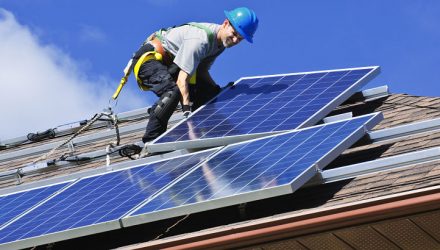The Guggenheim Solar ETF (NYSEArca: TAN), the largest exchange traded fund dedicated to solar stocks, is up more than 32% year-to-date, marking one of the most surprising performances among sector and industry ETFs this year.
Surprising because some market observers believed alternative energy stocks and ETFs would be crimped under the Trump Administration. While the U.S. has exited from the Paris agreement, the world goes on. For instance, German Chancellor Merkel, French President Macron, and Chinese President Xi Jinping all recommitted to the Paris agreement after Trump’s exit announcement.
“Fitch Ratings’ analysis of rated wind energy projects across EMEA, the US and Latin America, as well as solar photovoltaic (PV) energy projects across EMEA and the US shows electricity production from solar projects has tended to exceed initial independent estimates, while wind projects have more often underperformed against expectations. The more predictable nature of solar power is reflected in our ratings through the lower debt-service cover ratio a solar project generally needs to achieve investment-grade status compared to a wind project,” said Fitch Ratings in a new research note.
A number of bullish factors have supported the rebound in solar stocks, including continued strong overall world demand for solar, especially from India, Latin America, the Middle East and Southeast Asia; greater demand for solar power due to increasingly competitive price of solar, compared to alternatives as countries seek to meet carbon-reduction targets under the Paris climate agreement; and continued low valuations, relative to pricier U.S. large-caps, according to MAC Solar Index, the index provider for the underlying benchmark of TAN.
“Solar projects have benefitted from better-than-expected solar irradiance and plant availability,” notes Fitch. “The track record of solar projects is shorter, but they clearly have lower operational risk, better generation performance and lower volatility than wind projects. They are also more resilient to downside scenarios, as shown by stronger financial metrics under one-in-100-year generation assumptions.”
